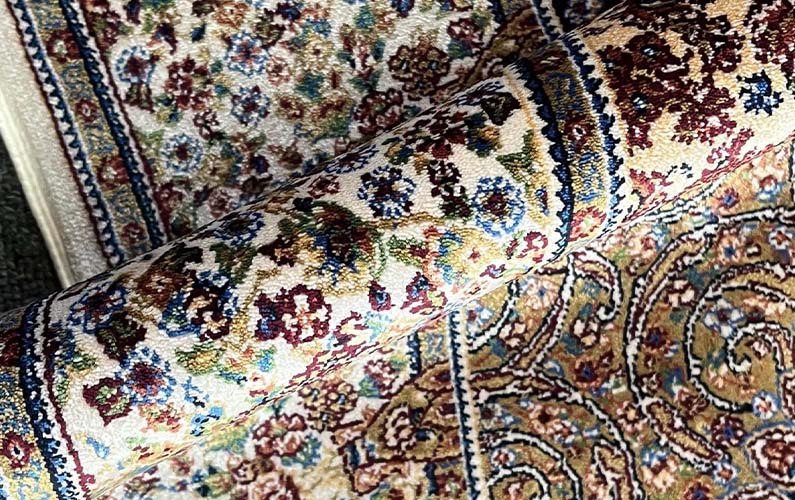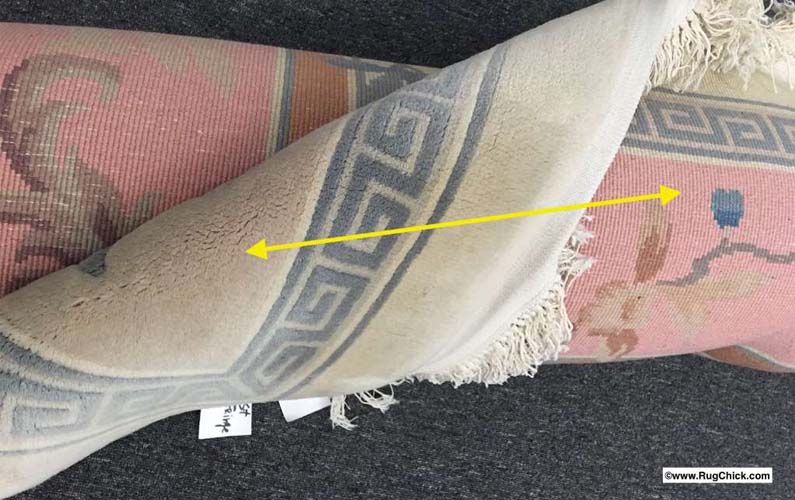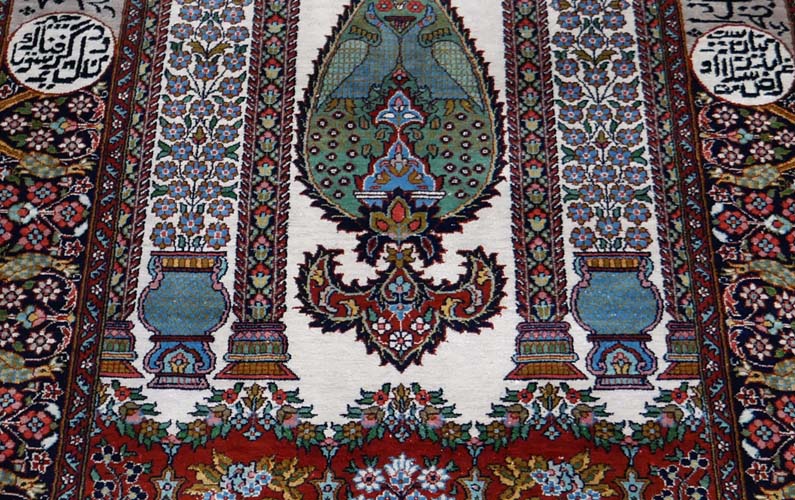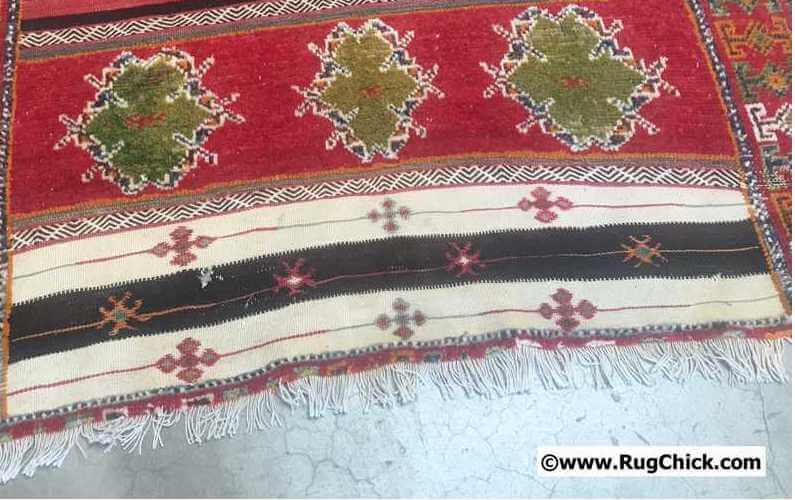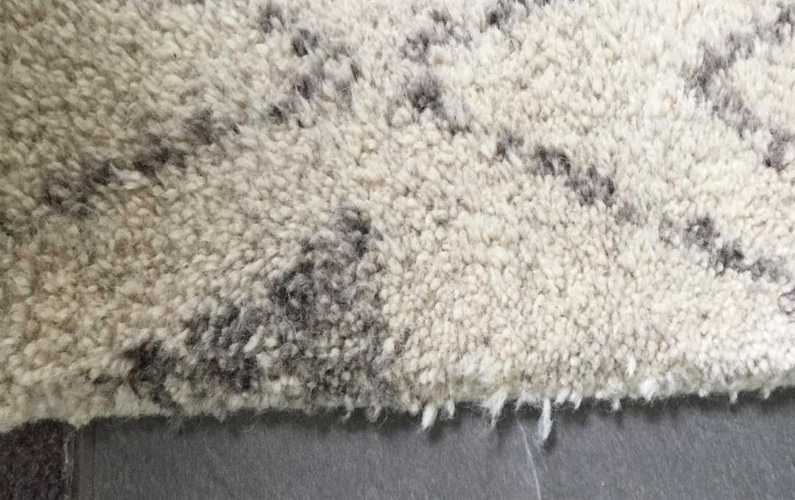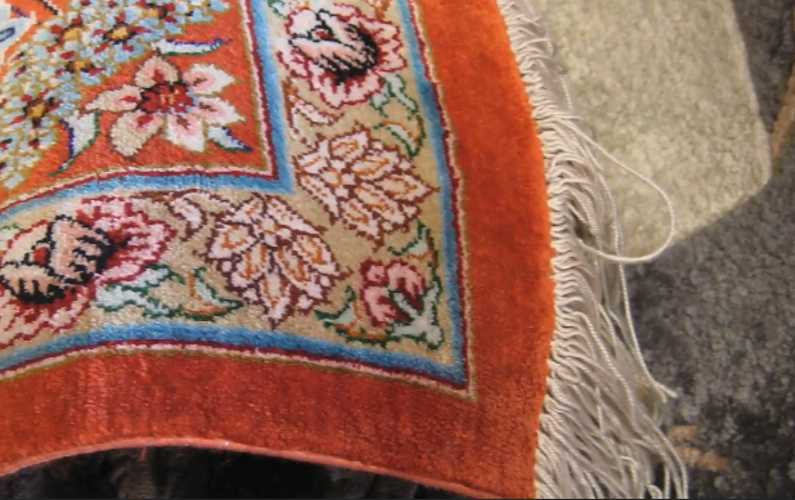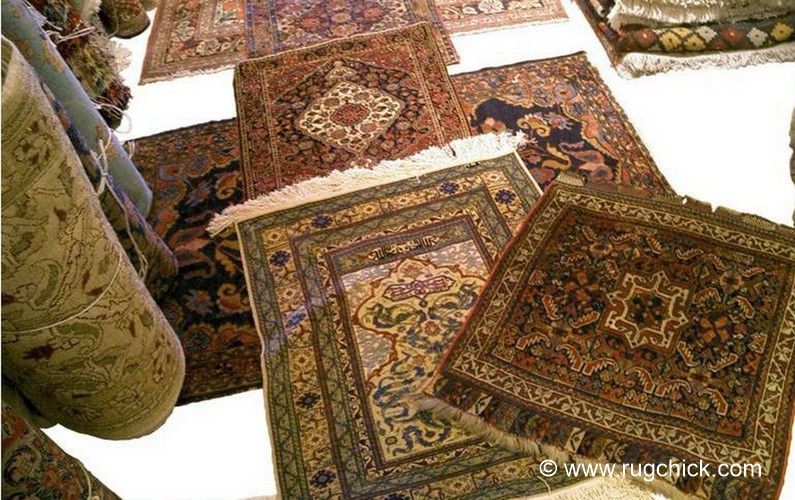Rugs That Stink.
When rugs come in our shop that are gosh-awful smelly, the usual suspects are: PETS, FLOODS, BAD LATEX, or BAD CHEMICALS.
Here are the common sources of bad odors in rugs.
1. PET PUDDLES
With pet urine, this hits a wool rug, penetrates those face fibers, and gets absorbed deep into the innermost cotton warp and weft foundation threads. Ever run for hours and take off those sweaty cotton socks? Then you know how much moisture cotton can hold. A LOT.
So lots of urine absorbed into the middle of your rug, it’s not good news.
Specifically, besides the odor, pet urine can create dye migration or loss that is permanent, as well as yellowing that often is permanent staining from the urea. It is one of the most damaging accidents that can happen to rugs, which is why quick clean-up is extremely important.
Here is a video on pets and rugs:
Cleaning a rug with a carpet cleaning machine in the home is only cleaning the surface and not the MIDDLE where the odor-causing contamination problem is.
Rugs with odors, especially pet odors, need to be WASHED. This needs to be a decontamination wash that removes the urine, as well as treating the foundation fibers to halt all fungal (mildew) and bacterial growth – both of which magnify the odor issue.
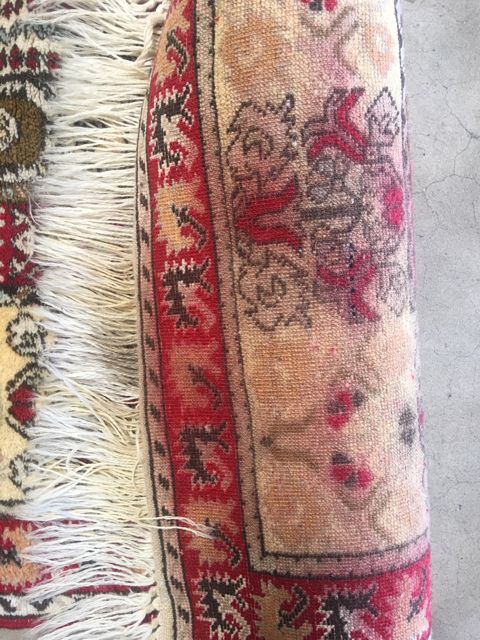
Pet urine causes permanent fiber and dye damage. On this wool rug the urine has led to mildew growth (which will eventually lead to dry rot damage), and a loss of the dyes.
If the quality of the wool and the dyes of a rug is good, then heavy pet damage will improve with a proper decontamination wash more than with those rugs that are poor quality fibers and dyes. There will always be permanent damage in scenarios as in the photo, but better quality rugs will bounce back better than lower quality rugs. Your professional rug washer will be able to give you realistic expectations.
If thorough rug washing methods are not used, then the source of the odor will not be removed.
If you have a pet accident – some tips on what to do right now can be found in my blog on Pet Accidents. (LINK to that post)
2. FLOODS
Rugs that get improperly wet can get a musty, moldy odor as mildew sets in. We see this mostly with rugs not prepared properly for storage, and the unit gets damp, or has a flood. Or, an unskilled cleaner does not verify the rug is 100% dry (by using a moisture probe) and rolls up a rug that feels dry, but isn’t.
Indoor planters that leak are also a BIG creator of water damage to rugs, because again that innermost foundation is made up of absorbent cotton, and it sucks up that water you spill over sometimes, and it leads to mildew, dye bleeding, and over time dry rot. I’ve seen a rug literally have a big hole crumble apart from long term water exposure.
In fact, here’s one:
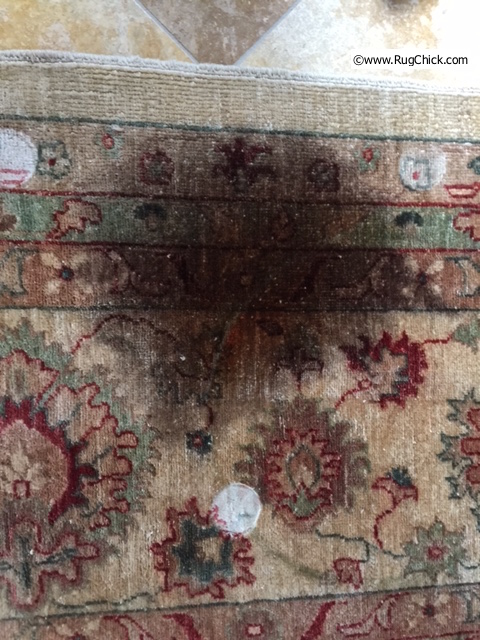
Potted plant moisture over time has led to a large circular mold stain on this rug. Dry rot in rugs needs to be cut away and patched, or the rug reduced to cut this contamination out of the rug.)
Rugs improperly exposed to water need to be properly washed to remove the contaminants from those foundation fibers and the face fibers. If you step in a dirty puddle, you don’t wring the sock, wipe it off, dry it, and it’s clean enough to wear again. (At least I hope you don’t do that!) You wash it.
Same with rugs. You need to soak the rug in the proper sanitizing solution, and then thoroughly clean it. This needs to be handled by professional rug cleaners who are experienced at handling flood-affected contents, and bringing them back to pre-loss condition if possible.
3. BAD LATEX:
With some tufted rugs (these are the rugs that you do NOT see the same design on the back as the front because instead you see a material backing) – there can be some odor issues from glue used to hold these rugs together.
Here is a video on tufted rugs and how they are made:
Due to a lack of consistent quality control, some latex used to hold these cheaply made rugs together can end up souring, and not be properly cured. This gives off a VERY bad smell that is best described as a combination of sweaty old socks, burnt rubber, and livestock.
Nice, huh?
I have had a number of clients notice these odors when they have left their home for a few weeks, with the room closed up where the tufted rug is, and when they return home the odor is VERY strong.
When the odor is from a bad batch of sour latex, this odor will be noticeable when the rug is brand new. If this happens with a rug you have just purchased, this is considered a manufacturing flaw, and the rug should be returned. Cleaning will not remove the source of this odor, it is soured latex.
If the odor is coming from an older tufted rug, and the glue is breaking down and deteriorating, sometimes this odor can be removed with proper washing and replacing the backing with fresh latex adhesive. However, sometimes the cost of a wash and the new backing may be more than the cost to simply buy another new rug.
I would say about 10-15% of the tufted rugs we see from India have this odor problem when they are brand new. I always tell my clients to take these rugs IMMEDIATELY back to the store they bought it and ask for a replacement (that doesn’t smell) or their money back. This is a manufacturing flaw.
I have read some comments from retailers that say the odor is nothing to worry about. It’s not “dangerous.”
Do you think someone might say this in order to keep people from getting refunds?
Yeah, I think so too.
Here’s what I know… when something smells really bad, my natural instinct is to move away quickly.
Your body does that to PROTECT you. If my nose tells me to “get away” – then I know it is harming me.
What is really scary is that many of the tufted rugs I see on the market today are made for kids. They have goofy designs on them, and some are cute… but the ones with the odors, I certainly would not want any kids around those. Or pets.
4. BAD CHEMICALS
The fourth common source of strong odors is chemical use and residue. In some rug making countries there can be some aggressive use of sometimes quite dangerous chemicals.
For example, the production of viscose/rayon in both fabric and rugs is made through the use of carbon disulfide to make wood pulp into an artificial silk fiber. The toxicity of carbon disulfide is undisputed (if you would like to see the research on the harm created by the viscose-rayon industry, grab the book “Fake Silk: The Lethal History of Viscose Rayon” by Dr. Paul David Blanc).
Some people have chemical sensitivities to rayon clothing, and this could also happen with rayon rugs and its other known fiber names: viscose, bamboo silk, banana silk, and manmade silk rugs.
Other chemicals that can cause chemical sensitivity reactions, or create foul odors, are dye stripping and bleaching chemicals, tea wash dye chemicals, moth balls, and the use of formaldehyde in some very low quality rug production houses.
Most of the odors we see coming from chemical residue reactions in new rugs tend to be from a small percentage of rugs coming out of India, Iran, and Morocco.
With the India rugs, they are some instances of formaldehyde used in some glue backed tufted rugs, and with some of the “tea wash dyed” rugs.
From Iran we are seeing colorful rugs being completely stripped of dyes through an aggressive chemical process which often leaves residue in the interior cotton foundation fibers. Sometimes these rugs are sold as “distressed” faded Persian design rugs, and some of these bleached out rugs are over-dyed in bright colors again. Both the chemicals used to strip the rug of color, and then the follow-up over-dyeing chemicals, have the potential to create odor issues that can irritate some new rug owners.
Some people have bad reactions to past moth ball use, and moth balls are known to be toxic. Some people also have bad reactions to formaldehyde, also known to be toxic.
There is one production house in Morocco in Fez that is using formaldehyde in their dyes, which was causing local weavers to become ill.
This has led to some of the better weaving houses in Morocco, such as The Anou, to lead the efforts to provide safe, clean weaving environments for their artisans – and sell safer, better textiles. (Here is an article on their efforts – VIEW ARTICLE)
If you are not sure the rug is the source of your possible allergic or chemical reaction, or a reaction in your kids or pets, then roll it up and remove it from your living space for a few weeks and see if the symptoms change.
Most chemical surface residue can be washed away, but any chemicals absorbed in the interior foundation fibers may take additional soaking cycles to try to remove it thoroughly. Washing is not a cheap service if the process is being done correctly, so if the rug is new you might contact the rug retailer to have them pay to wash the rug, or to exchange the rug for one that does not have a residue and odor issue.
If your rug has an odor that does not fit any of the scenarios in this post, you are welcome to reach out to me with questions using the CONTACT form.
Take care,
Lisa

